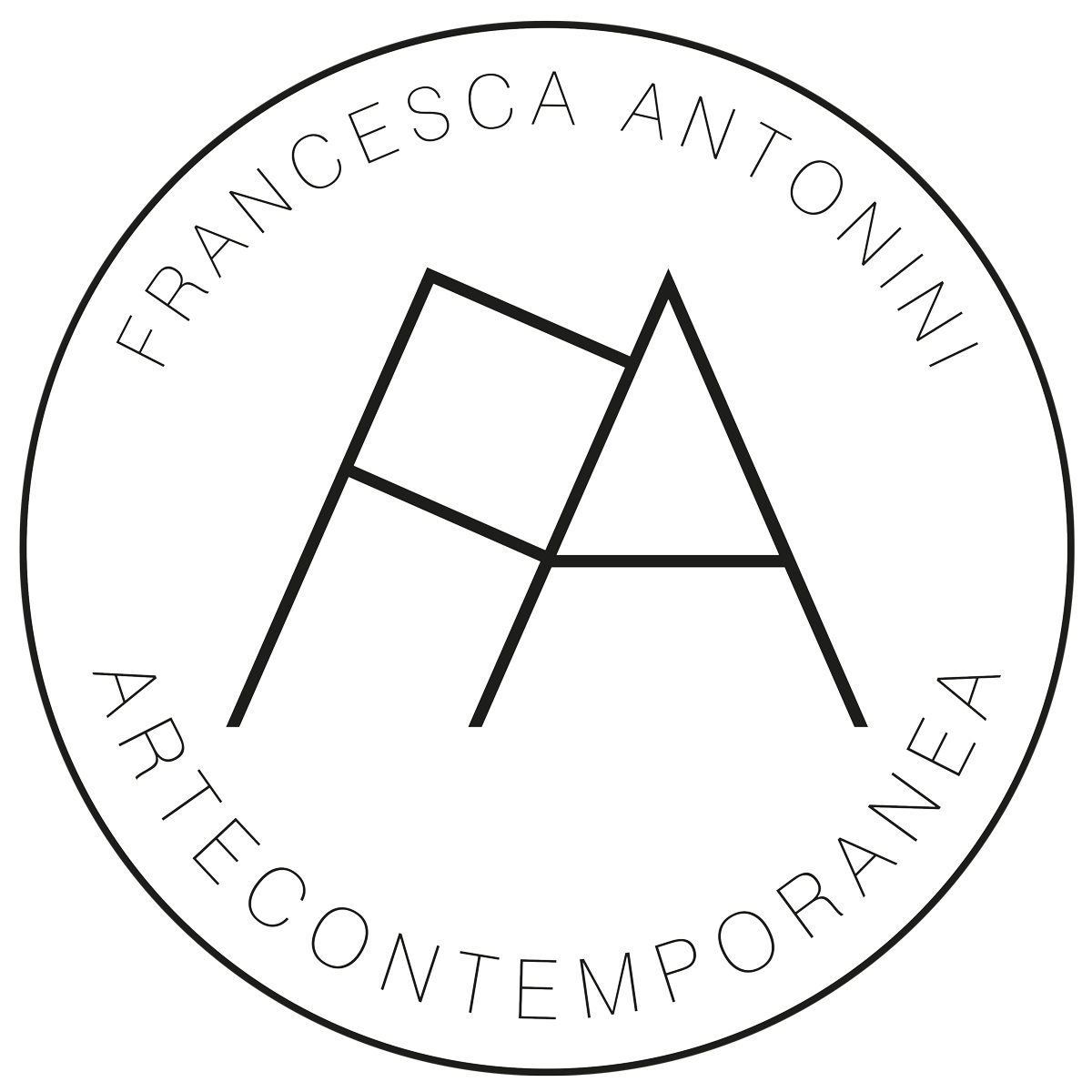EPARINA
GUGLIELMO CASTELLI
2014
WHAT IS HAPPENING?
Claudio Libero Pisano
There are several ways of making war, the conventional one and the one which involves, instead, the use of chemical weapons of mass destruction. Rarely, there is who prefers the diplomatic path. Different are also the ways of declaring it. You can activate an enormous system of communication, trying to win even before you have fired the decisive shots.
There are also silent wars, that do not draw anybody’s attention, but sneak to the core of the systems to bend them. Guglielmo Castelli chose an own personal way to declare his war. A silent conflict, but, at the same time full of noise. A declaration of war to the cramped space of the page or of the canvas and a increasingly evident intolerance to the strict definitions.
Castelli is an artist that is moving his painting, without clamour, towards unusual courses.
His poetic research, in the last two years, has focused on the ability of the painting to fill the space, even outside of predetermined constraints, that concerns not just the phisical constriction of the painted surface but, above all, moves strings related to mental ties, where the painting gradually occupies the perception of space, takes possession of tridimensional aspects. The dimensions have evolved along with the shapes of his canvases. You must enter into a Castelli’s work, large or small. The support doesn’t count for the artist, what matters, instead, is the capability of his painting to hit the viewer with the power of the story.
The depiction stands on the canvas but, actually, is everywhere. If you agree to walk in, the question you ask is not anymore about what the work represents but rather about what is happening around it.
The space of painting remained for him a path that never looks back. The painted surfaces are handled with attention, the colors overlap and his pictures become movement. The childhood theme, hallmark of the artist, remains, but there is a gap, comparing it to the past: the survey on the color has become artistic project. The autobiographical aspect, even if present, is at the service of a mature and accomplished composition. His work competes with the ambience, invervening with installations that mantain and reinforce some of his charateristics. As the backgrounds, nearly becomed an autograph signature, or the figures that, absorbed more and more caothically in the color, suggest impossible anatomical positions. The relationship between the object of representation, swirling and caothic, and the background, always clear, almost flat with a basic and intentionally standardized range of colors is the mark of Castelli. The flat backgrounds, with no shadows, seems to be the way of the artist to bypass the constrictions of measures. The bases of his works remark the absolute indifference for the anxiety of occupying a context. Small sheets of paper of standard size have the same poetical strength of canvases, over two meters high. The conxtext is nothing without the swirling strength of the work, it’s just the land on which everything happens, in a syncopated tangle that steals the show with hypnotic force, preventing the sight to go elsewhere. The invitation to contemplate his early works has now becomed urgence of invest the spectator more than accompany him.
Everything seems to happen in a limitated period of time, into a chaos from which is difficult to separate. The action of the figures, submerged by color, doesn’t lean on anything, they are in the center of an endless space.
Is not clear if they are ascending or precipitating. But they don’t seem to care, because what matters is keeping the position, the tangle of that moment. The search for a formal balance gives way to the freedom of suspending action without any reference point.
For Castelli is a matter of points of view. Some tiny figures on sheets of white paper looks like minuscule, when observed from above, but gigantic in consideration of the assigned space. Is the advantage of thesurrender to certain references. There’s no more above or below, you can be dwarf or giant, at the same time, in the same second. And his artistic maturity is evident even in the freedom that he succeeds to take, leaving vast areas without painting, where all and nothing find a balance. The answer is not given because is everywhere, you can find it in the anxiety of tumultuous action, as in the void of hospital colors backgrounds, that, in spite of pastel shades, are not comforting.
The autobiographical component melts in a more complex story.
You have to serch for it, even in minuscule hints. Heparin is a medicine used to stop processes of blood coagulation in people who present a risks of arrest in venous flow. Is a medicine that Casteli includes in the folds of his compositions. As if to say that the natural proceeding of a liquid and vital course sometimes needs to be violently interrupted. From outside. Not everything that is naturali is real, and is sufficient unto itsel. The molecule of heparin itself reminds some tabgled figures of his works.
In his poetry, Castelli tells us everything, his literary references, his private life. He can build a story without getting trapped in the diaristic drift. Comes out of himself and he detaches strongly from himself. But doesn’t renounce to say that, even if rationalised, what he’s gambling is his life and ask hard an attention not superficial. He exposes himself without any fright, but at the same time calls for vigile e never disinterested look. He get to start a dialogue with the viewer, never slackening off, but shows also all his weaknesses. You must proceed with soft steps because you’re walking on his life. With this lightness and responsibility Castelli asks to enter in his work.


















